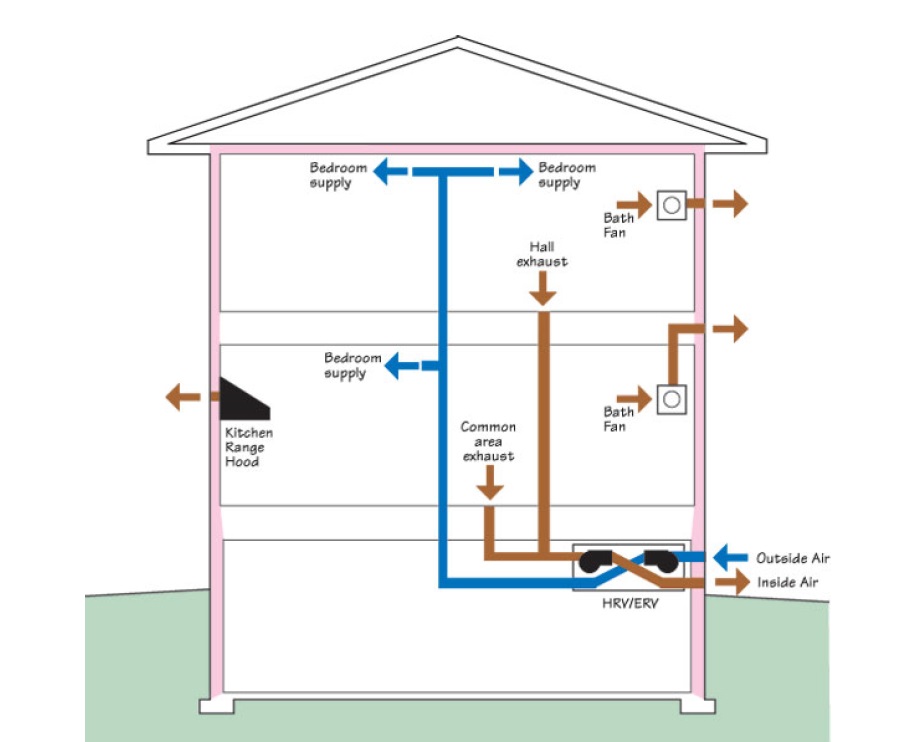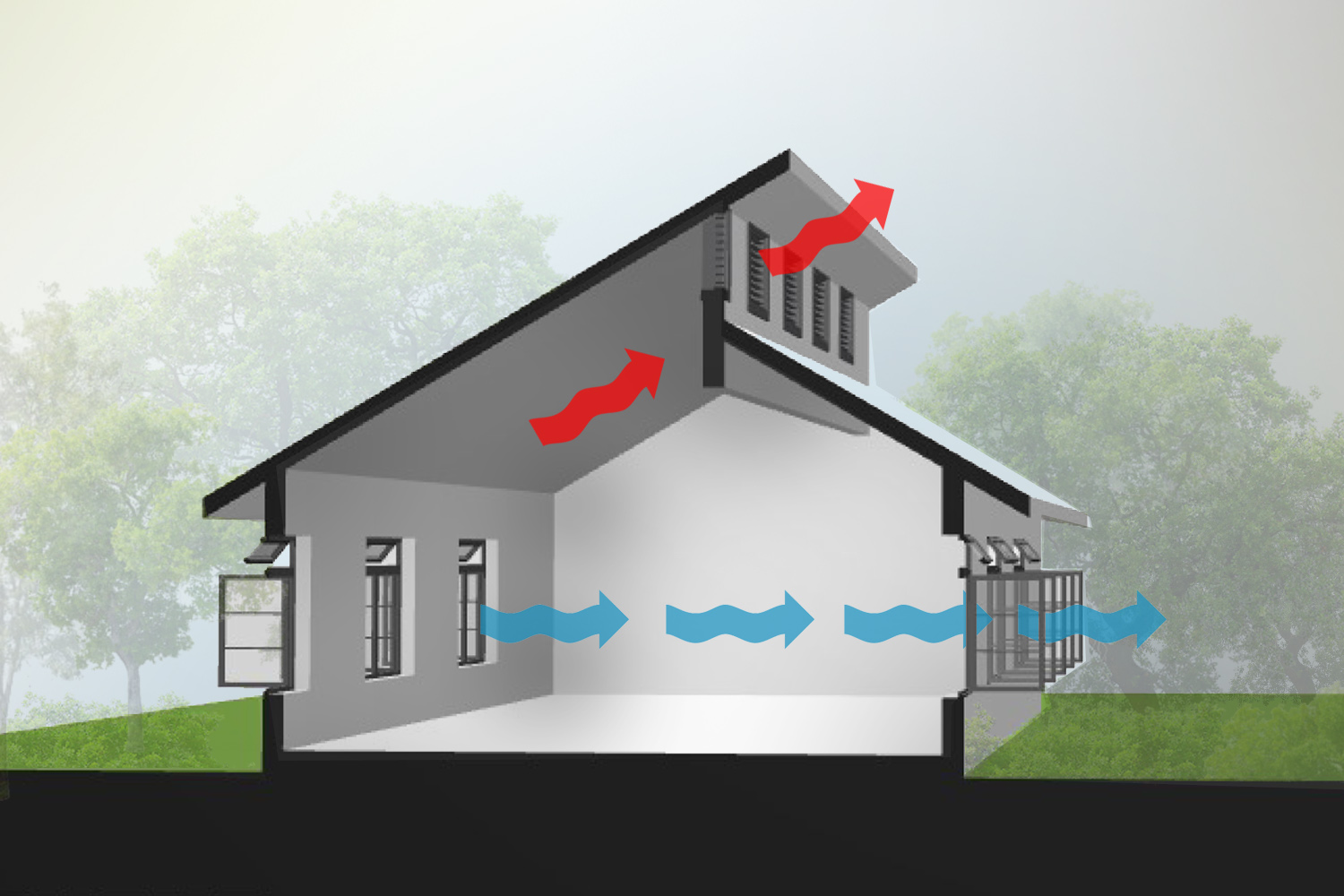Effective Ways to Upgrade Your Home Ventilation Melbourne Setup
Understanding the Relevance of Home Air Flow for a Healthier Living Setting
Home ventilation plays a necessary duty in preserving a healthy and balanced living setting. It helps with the exchange of exterior and interior air, which is essential for improving air top quality. Without proper ventilation, homes can end up being reproducing premises for allergens and pollutants. The consequences of poor air blood circulation can be significant. This brings up the query of how homeowners can efficiently carry out air flow approaches to protect their health and well-being. Recognizing these approaches is necessary.

The Essentials of Home Ventilation
Home air flow acts as an important part of indoor air quality and convenience. It entails the procedure of exchanging stagnant interior air with fresh outdoor air, thus minimizing moisture and managing temperature. Appropriate ventilation systems can include natural methods, such as open windows and vents, as well as mechanical systems, such as exhaust fans and air exchangers. Efficient home air flow helps stop problems like indoor mold development and the buildup of unsafe bits. It additionally enhances general energy effectiveness, as well-ventilated areas can keep comfy temperature levels with much less reliance on home heating and cooling down systems. Understanding the fundamentals of home ventilation is vital for home owners seeking to create a much healthier living atmosphere for themselves and their family members.

Typical Resources of Indoor Air Air Pollution

Several may not realize it, interior air pollution can originate from various sources within a family. Common factors include unstable natural compounds (VOCs) released from paints, solvents, and cleansing items. Family appliances, such as gas stoves and fire places, can launch damaging gases like carbon monoxide and nitrogen dioxide. Furthermore, mold and mold prosper in damp locations, launching spores that impact air quality. Pet dog dander, allergen, and pollen can gather inside your home, further aggravating air pollution degrees. Cigarette smoking inside produces hazardous chemicals that remain in the air. Lastly, building materials, including asbestos and formaldehyde, can off-gas unsafe materials. Acknowledging these sources is necessary for preserving a much healthier indoor setting and promoting effective ventilation methods.
Health Results of Poor Ventilation
Interior air pollution can have considerable wellness implications, specifically when ventilation is insufficient. Poor air flow can result in the build-up of hazardous toxins, such as volatile natural substances, mold and mildew, and particulate matter. This buildup might cause respiratory system concerns, including asthma, allergic reactions, and chronic obstructive lung disease. Individuals may experience signs like frustrations, fatigue, and inflammation of the eyes, nose, and throat. At risk populaces, such as children and the elderly, are at higher danger for serious wellness results. Long-term exposure to badly ventilated atmospheres can likewise add to extra significant problems, consisting of heart diseases. Consequently, making sure correct ventilation is necessary you can try here for keeping a healthy and balanced living atmosphere and reducing the risk of health problems connected with indoor air pollution.
Efficient Ventilation Strategies for Your Home
Correct ventilation is necessary for preserving a healthy interior environment, and implementing efficient techniques can greatly boost air high quality. House owners can begin by guaranteeing that exhaust followers are set up in bathroom and kitchens to get rid of excess wetness and odors. Opening up windows frequently permits fresh air to flow, particularly during moderate climate. Additionally, utilizing air purifiers with HEPA filters can aid capture air-borne pollutants. For homes with home heating and cooling systems, preserving HVAC systems and altering filters routinely is important for peak performance. Integrating all-natural ventilation methods, such as cross-ventilation, can also boost airflow. Sealing any type of leakages in doors and windows avoids unwanted drafts, which can interfere with controlled airflow, eventually leading to enhanced indoor air top quality and convenience.
Preserving Ideal Air Top Quality Year-Round
To preserve optimal air quality year-round, home owners must adopt a proactive technique to managing their indoor environment. On a regular basis keeping track of indoor air high quality is vital; this consists of monitoring for pollutants such as dust, mold, and volatile natural substances (VOCs) Implementing reliable ventilation systems, such as exhaust fans and air purifiers, can substantially reduce airborne impurities. Additionally, routine maintenance of heating and cooling systems guarantees peak efficiency and air flow. Home owners need to additionally take into consideration moisture levels, as excessive moisture can lead to mold and mildew growth. Seasonal changes may necessitate adjustments in air flow methods to suit differing outside air quality. By focusing on these methods, house owners can develop a healthier home, promoting total well-being for all residents throughout the year.
Frequently Asked Inquiries
How Can I Inform if My Home Needs Much Better Air Flow?
To identify if a home calls for much better air flow, one must observe signs such as consistent humidity, mold development, mildewy odors, condensation on home windows, or increased allergic reaction symptoms, showing inadequate air movement and potentially bad interior air high quality.
What Are the Indicators of Poor Indoor Air Quality?

Can Houseplants Improve Indoor Air High Quality Effectively?
The effectiveness of houseplants in enhancing interior air high quality is questioned. While some research studies suggest they can take in toxins and generate oxygen, find here their overall effect may be marginal compared to appropriate air flow and air filtration systems.
Just how Typically Should I Change My Air Filters?
The frequency of air filter adjustments generally depends upon use and filter type. Normally, it is recommended to change filters every three months, though families with pets or allergic reactions might need even more constant changes for excellent efficiency.
Are There Any Kind Of Particular Ventilation Solutions for Allergic Reaction Sufferers?
Lots of air flow systems, such as HEPA-filtered devices, efficiently minimize irritants in the air. Home Ventilation Melbourne. These systems catch pet dog, pollen, and dirt dander, offering allergy patients with a cleaner, healthier indoor atmosphere while handling air high quality successfully
It promotes the exchange of interior and exterior air, which is crucial for enhancing air high quality. Home air flow serves as an essential component of interior air top quality and convenience. It entails the procedure of exchanging stale interior air with fresh exterior air, therefore lowering moisture and regulating try this out temperature level. Indoor air pollution can have significant health effects, specifically when air flow is insufficient. Appropriate ventilation is important for maintaining a healthy and balanced indoor environment, and applying reliable strategies can significantly improve air quality.